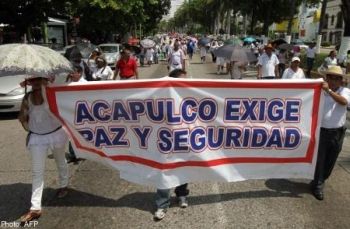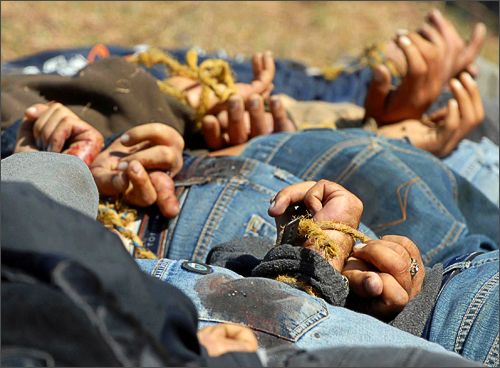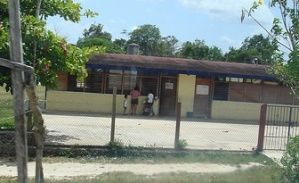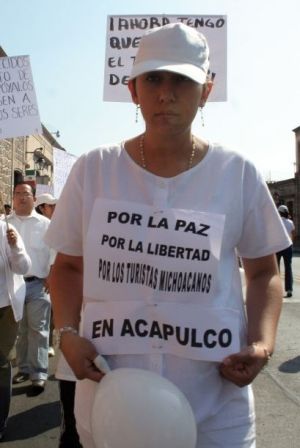
Publisher:
Bonnie King
CONTACT:
Newsroom@Salem-news.com
Advertising:
Adsales@Salem-news.com

~Truth~
~Justice~
~Peace~
TJP
Sep-15-2011 12:52

 TweetFollow @OregonNews
TweetFollow @OregonNews
Security Breakdown Turns into Education Crisis
Salem-News.comTeachers in Mexico are told to hand over part of their pay to violent cartels, several dozen are currently missing.
 Teachers from Acapulco say enough is enough; they are tired of the intimidation and violence. Photo: edvantage.com.sg |
(ACAPULCO) - For three weeks, thousands of students in the old Mexican resort of Acapulco have gone without classes. Their schools remain shut down by an atypical teacher strike that’s ground much of the educational system to a halt. Instead of striking for higher wages, better working conditions and fair treatment by supervisors, the teachers are demanding basic guarantees of life and limb.
In the last three months, more than 43 teachers allegedly have been victims of kidnappings while thousands of others have been threatened with extortion and violence. Some educators contend they are targets of armed robbery and auto theft. Reports are even surfacing of students forced to pay small protection fees.
“They directly extort the teachers, violently kidnap them, enter work centers and take them away in front of the students,” charged one educator who preferred to remain unidentified. “In fact, we know (the fate) of one teacher…”
An anonymous warning for teachers to turn over half their monthly salaries beginning in October plus half their annual Christmas bonuses was the final straw for many educators.
Beginning in late August, teachers in schools serving the violence-ridden, working-class neighborhoods on the outskirts of Acapulco began staying away from work in support of a demand for a safe and secure work environment. Since then, the strike has spread to more than 600 schools that normally educate tens of thousand of students.
 |
Members of both the official SNTE and dissident CETEG unions are participating in the strike; the SUSPEG public employee union and an organization representing university teachers have joined the movement as well.
The types of crimes and threats reported by Acapulco teachers are also being denounced by their colleagues in other parts of Guerrero, and the strike could spread to the entire state
On Tuesday, September 13, as many as 2,000 members of the CETEG who had been conducting a protest over pay, job assignment and curriculum issues, partially blockaded the major Mexico City-Acapulco highway in the Guerrero state capital of Chilpancingo in solidarity with the Acapulco teachers’ demands.
Guerrero Governor Angel Aguirre and high officials from his administration have pledged to increase police/military protection and install “panic” buttons in the schools. Acapulco Mayor Manuel Anorve Banos rejected the work stoppage, arguing that the strikers were playing into the hands of criminal organizations who are battling for control of the city.
“If we close the schools, we fall into psychosis,” Anorve said. “We are then giving an advantage to those who want to take over the ‘plaza,’ to those who intend to take power in the city and damage the economy of the people of Acapulco.”
The strike has also drawn the commentary of purported members of La Barredora, one of the criminal organizations involved in the ongoing battle for Acapulco. Last week, narco-banners signed by La Barredora and posted at state education department blamed the rival Independent Cartel of Acapulco for extorting teachers.
The strikers insist that the security measures announced by the state government are inadequate.
 One of the closed schools in Acapulco. twylah.com |
Joined by parents, members of children’s rights organizations and a commission of rejected student applicants from the Autonomous University of Guerrero, several thousand teachers staged an Acapulco march on September 14. They demanded a direct dialogue with Governor Aguirre as well as the deployment of federal military and police forces around schools.
A teacher reiterated that her fellow educators do not trust the municipal and state police forces, which they accuse of collusion with organized crime. Citing a personal example, the unidentified teacher said her daughter was kidnapped while leaving the Gran Plaza shopping mall in 2009 and later freed after a ransom was paid.
“We were threatened...,” she said, “but we can’t remain silent and have to denounce institutionalized organized crime, because the state police participated in the kidnapping.”
Acapulco’s teachers are far from alone in their complaints of violence and insecurity. Since the December 2009 government killing of drug lord Arturo “El Barbas” Beltran Leyva who used to control Acapulco, splintered criminal organizations have sown chaos in the city once renowned for its romantic sunsets and non-stop night-life. Last month alone, 150 people were reportedly murdered in the city of nearly 800,000 people. The violence has spiked noticeably since Governor Aguirre took office last April.
 |
Acapulco was the scene of another mass protest against violence, when thousands of residents joined 600 members of the Caravan for Peace and Dignity in a march along the city’s Costera main tourist drag on Saturday, September 10. Led by poet Javier Sicilia, the caravan was headed to the states of Oaxaca and Chiapas for meetings with non-governmental organizations, indigenous communities, migrant advocates, the Zapatista National Liberation Army and Guatemalan non-governmental organizations.
Like previous events organized elsewhere in Mexico by Sicilia’s movement, the Acapulco stop was an opportunity for collective, emotional venting. Bereaved mothers shed public tears over murdered and disappeared young sons; citizens complained of extortion from criminal bands; relatives of long disappeared or assassinated political activists decried institutional impunity.
“They charge us 5,000 pesos per taxi and charge my granddaughters 10 pesos in their schools,” said an unidentified taxi driver. “Little hotels like the Villa Vera and La Palapa have closed because of the impossible situation. We don’t know what to do.”
Even as the caravan/march was proceeding down the Costera, violence unfolded virtually under the noses of passing protesters. A man was murdered just blocks from the march, adding to the day’s murder toll of three victims. Next day, four young men were found murdered in Acapulco.
Interviewed in the Pacific port, activist Javier Sicilia cautioned the struggle for justice and non-violence would be a long one.
“The problem is very big. I think the movement has made important contributions, but it is not going to solve things immediately…” Sicilia said. “We are mistaken if we are hoping for rapid solutions. It is a matter of patience and consistency.”
In a separate interview, Abel Barrera, the longtime director of the Guerrero-based Tlachinollan Human Rights Center of the Mountain, contended that the public security crisis in his state and Acapulco was the bitter fruit of decades of government-sponsored or sanctioned violence dating back to the Dirty War of the 1970s, compounded by widespread corruption that’s wedded police forces with criminal organizations.
“This is grave, because the operation of organized crime is linked with the perverse management related to the security apparatus,” Barrera said.
Governor Aguirre, meanwhile, expressed confidence that a solution to Acapulco’s school crisis was forthcoming and that classes could resume by next week. Tomorrow, September 16, is Mexican Independence Day and a national holiday.
Sources:
- El Sur September 13, 14 and 15, 2011. Articles by Karla Galarce Sosa, Berenice Reyes, Aurora Harrison and Daniel Velazquez.
- La Jornada (Guerrero edition), September 6, 9, 10, 11, 13,14, 2011. Articles by Hector Briseno, Citlal Giles Sanchez, Rodolfo Valdez, Francisca Meza Carranza, and editorial staff.
- La Jornada, September 11 and 13, 2011. Articles by Alonso Urrutia and Luis Hernandez Navarro.
- Proceso/Apro, September 6, 10, 11 and 14, 2011. Articles by Ezequiel Flores Contreras, Jose Gil Olmos and Pedro Matias.
- Nortedigital.mx, September 14, 2011. El Universal, September 11 and 14, 2011. Articles by Adriana Covarrubias and Notimex./li>
Frontera NorteSur: on-line, U.S.-Mexico border news
Center for Latin American and Border Studies
New Mexico State University
Las Cruces, New Mexico
Articles for September 14, 2011 | Articles for September 15, 2011 | Articles for September 16, 2011

Salem-News.com:
googlec507860f6901db00.html



Terms of Service | Privacy Policy
All comments and messages are approved by people and self promotional links or unacceptable comments are denied.
[Return to Top]
©2025 Salem-News.com. All opinions expressed in this article are those of the author and do not necessarily reflect those of Salem-News.com.